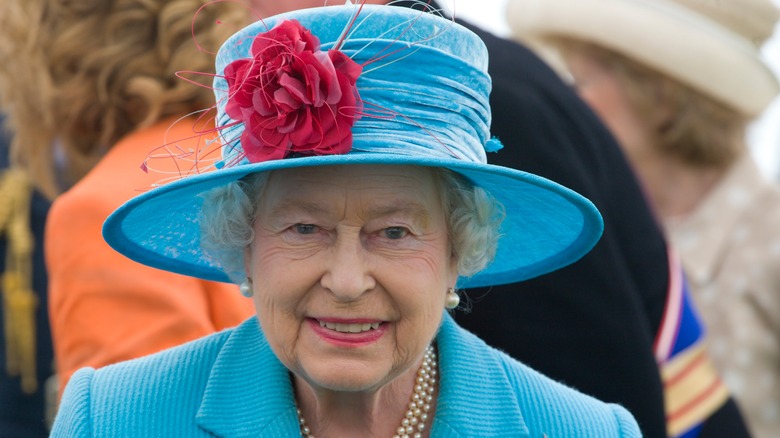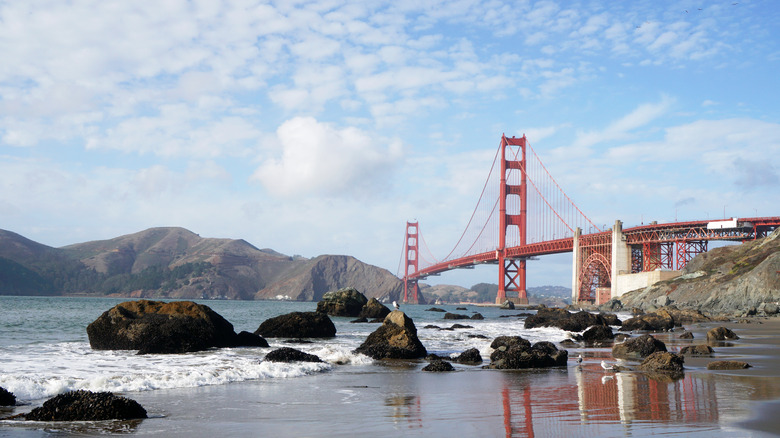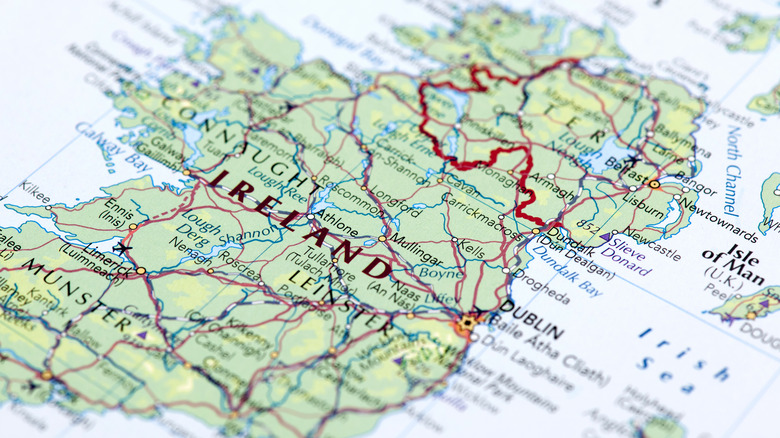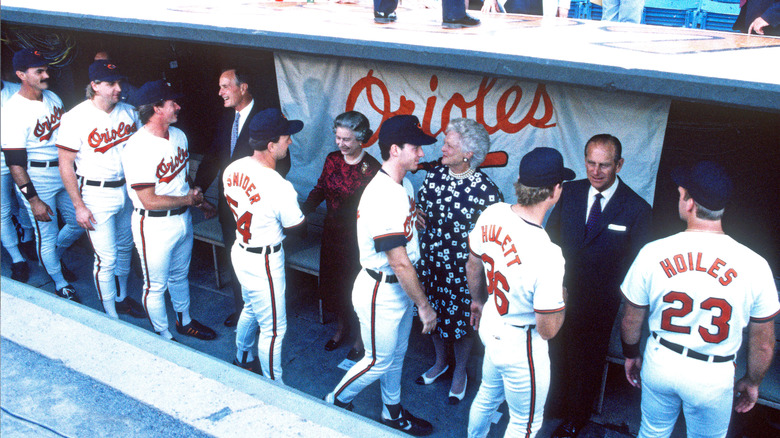The FBI Documents Detailing A Plot To Kill Queen Elizabeth In 1983 Explained
Queen Elizabeth II held her glass of champagne aloft and gave a toast (via the Associated Press). "Mr. President, I raise my glass to you and Mrs. Reagan, to the friendship between our two countries, to the people of California, and to the people of the United States." It was March 3, 1983, and she and her husband, Prince Phillip, were visiting the United States. President Ronald Reagan threw the royal couple a lavish state dinner, held at the M.H. de Young Memorial Museum in San Francisco.
Behind the scenes, the Federal Bureau of Investigation was working overtime to try and stop what the agency had deemed a credible threat to Queen Elizabeth's life related to the Troubles in Northern Ireland, according to FBI files released in 2023. It seemed the bloody sectarian conflict between Pro-British Protestants and minority Catholic nationalists who wanted to reunite Northern Ireland with the Republic of Ireland to the south had spilled over into the U.S.(per Britannica). A man whose daughter had been killed in Northern Ireland said he planned to seek revenge on the queen.
5,000 protestors
Outside the glittering champagne and caviar event at the museum, 5000 protestors chanted and held signs reading "Brits Out of Ireland," along with others aimed at Reagan — "U.S. Out of El Salvador” and "Reagan Steals From the Poor and Gives to the Rich." The crowd comprised anti-British and anti-Reagan contingents who had united to show their mutual disapproval of the royals and the president.
The FBI had been keeping a close watch on the various groups who planned the protest and kept in contact with the Secret Service, the San Francisco Police Department (SFPD), and the Alameda County Sheriff's Office. The latter agency went so far as to place an "asset" in one of the protest groups to better keep tabs on its plans, per the FBI file. A massive police presence greeted the protestors, according to the AP. But the real threat, the FBI believed, came from a lone Irishman who frequented a local bar known for its sympathies toward the Irish Republican Army (IRA), the paramilitary organization that had assassinated Lord Louis Mountbatten — the queen's second cousin — four years earlier using a bomb.
A rubber bullet and a revenge plot
On February 4, 1983, an SFPD officer, who frequented an Irish bar called the Dovre Club, received a call from another bar patron who told him of his plans to kill the queen. The unnamed man said that "his daughter had been killed in Northern Ireland by a rubber bullet" (per the FBI file). According to Esquire, the British Army used this ammunition in Northern Ireland for crowd control, which killed at least 17 people —including children — during the Troubles. "This man additionally claimed that he was going to attempt to harm Queen Elizabeth and would do this either by dropping some object off the Golden Gate Bridge onto the Royal yacht Britannia when it sails underneath or would attempt to kill Queen Elizabeth when she visited Yosemite National Park," the file alleged.
The Secret Service made plans to block off the walkway on the bridge — not that it mattered. Queen Elizabeth didn't make her grand entrance into San Francisco Bay on her yacht. Instead, the royals flew into the city with the Reagans on the presidential jet, per The Sacramento Bee. It's unclear whether the change in plans stemmed from a terrible storm that day or the death threat. The trip to Yosemite went ahead without any hitches. The file doesn't say what extra precautions, if any, the FBI put into place for that event. Needless to say, the queen had a secure visit to the U.S., one of many over the years.
Further visits, further precautions
Queen Elizabeth II's 1983 visit to the U.S. was perhaps the most concerning in the eyes of the FBI. But as the recently released files demonstrate, it was not the only time that the feds were on high alert when it came to ensuring the safety of the British monarch.
In May 1991, the queen and Prince Philip were once again on a tour of America and due to make an appearance at a Baltimore Orioles baseball game. With the Good Friday Agreement still more than half a decade away, violence on the island of Ireland was continuing, with many lives tragically lost as a result. At the time, the FBI referenced a letter that was recently published in the Baltimore newspaper Irish Edition that said tensions were running high in the Irish community as a result of the quashing of the sentences of the Birmingham Six, a group of Irish men who had been wrongly sentenced to life in prison in 1975.
"Though the article contained no threats against the president or the queen, the statements could be viewed as being inflammatory," the file read. "The article stated that an Irish group had reserved a large block of grandstand tickets."
Per the FBI files, the bureau had received word that a large Irish party had booked out a block of seats at the game, suggesting the feds considered it a viable security threat. They kept a close eye on the stadium — though it appears that no intervention was necessary.



